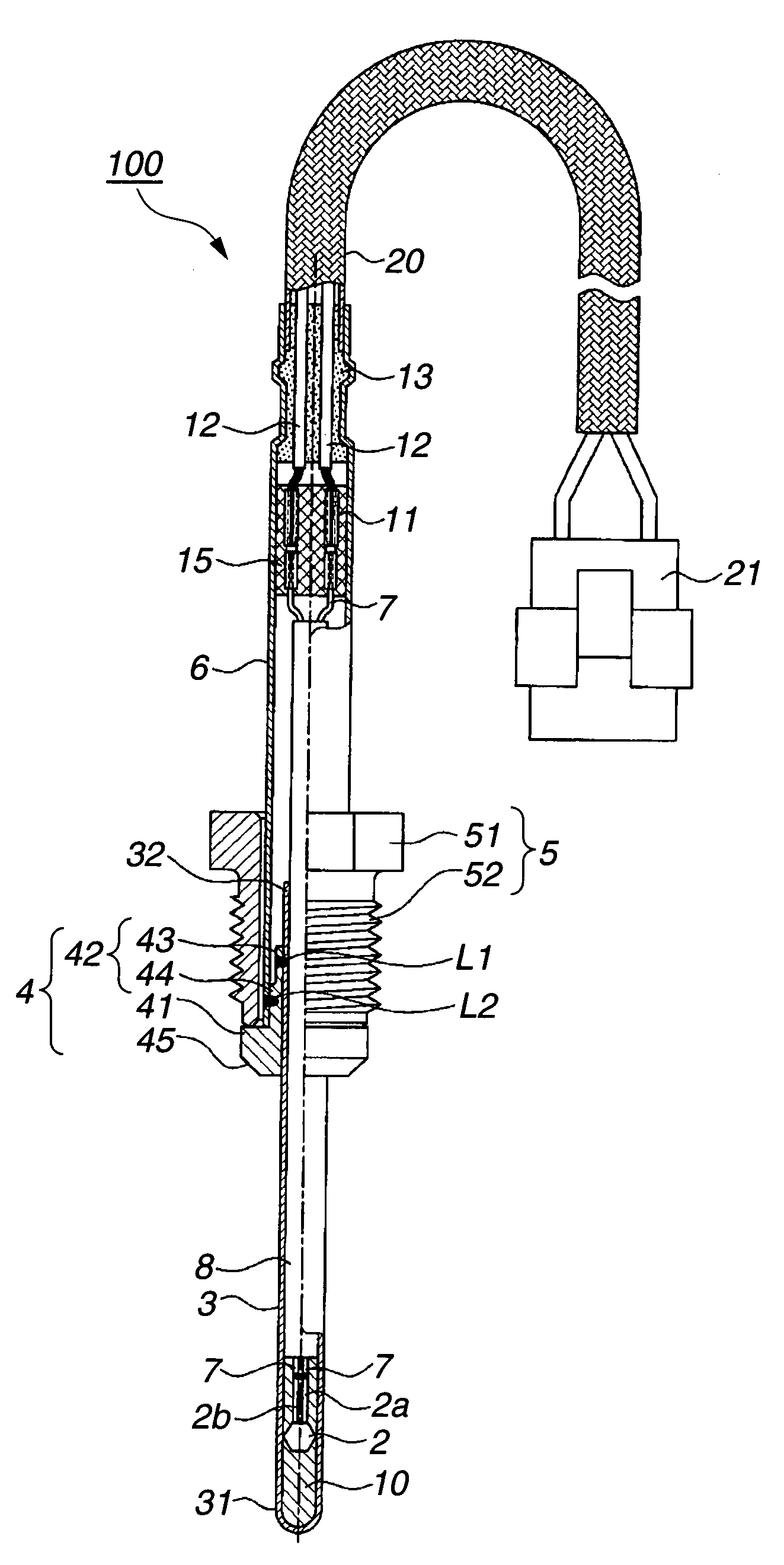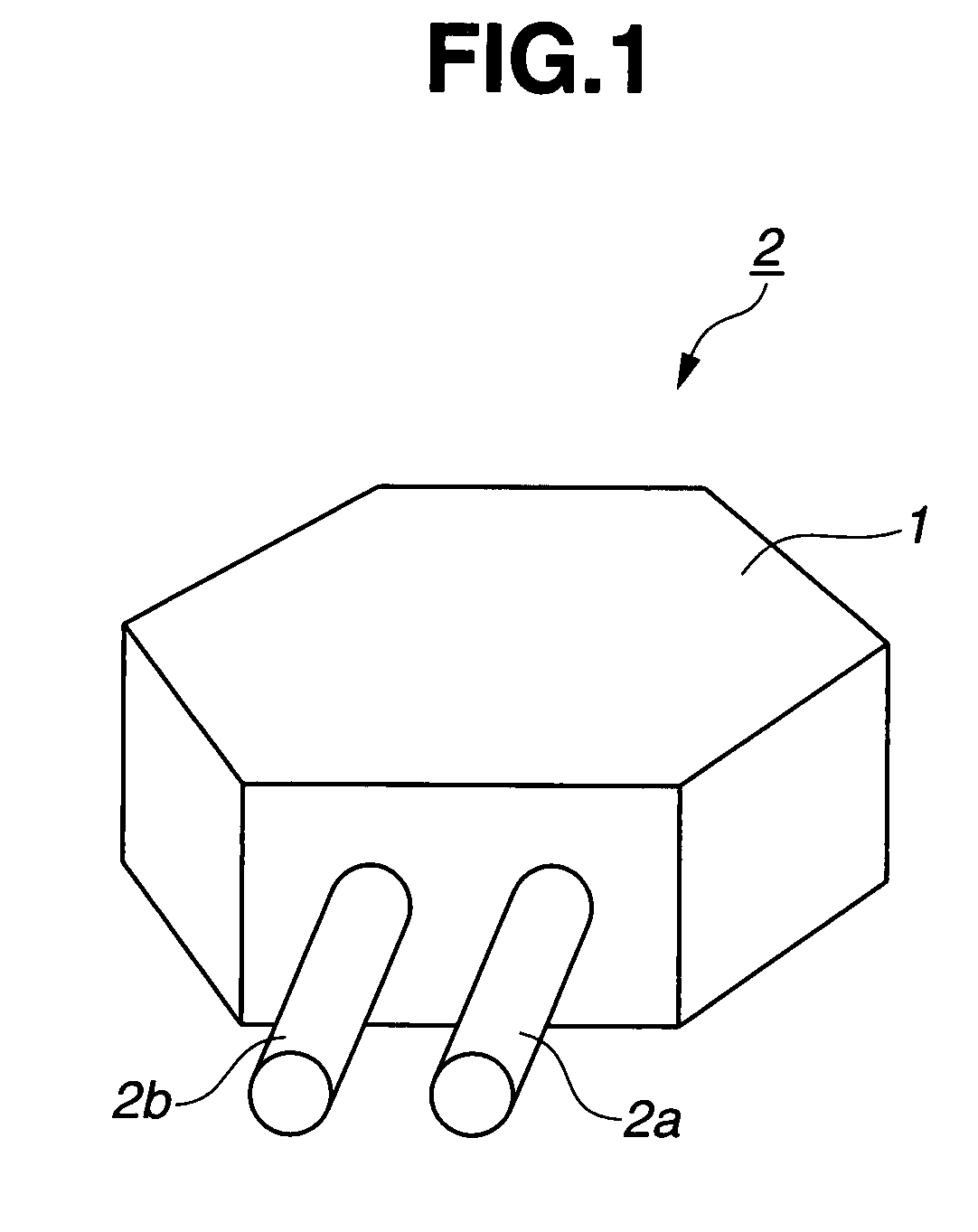Sintered electroconductive oxide, thermister element using sintered electroconductive oxide, and temperature sensor using thermister element
a technology of sintered electroconductive oxide and electroconductive oxide, which is applied in the direction of conductive materials, iron-filament ballast resistors, thermometer details, etc., can solve the problems of difficulty in determining the resistance values of thermistor elements and enabling temperature measurements
- Summary
- Abstract
- Description
- Claims
- Application Information
AI Technical Summary
Benefits of technology
Problems solved by technology
Method used
Image
Examples
examples
[0062]The present invention will be described in more detail with reference to the following examples. It should be however noted that the following examples are only illustrative and not intended to limit the invention thereto.
[0063]An explanation will be first given of the production and performance evaluation of thermistor elements 2 using sintered electroconductive oxides 1 according to Examples 1 to 7 and thermistor elements using sintered electroconductive oxides according to Comparative Examples 1 and 2.
examples 1-7
[0064]Raw powder materials of Y2O3, SrCO3, MnO2, Al2O3 and Cr2O3 (all commercially available at purity of 99% or greater) were weighed to attain a composition of the chemical formula (composition formula): YaSrbMncAldCreO3 by mole fractions a, b, c, d and e indicated in TABLE 1, followed by subjecting the raw powder materials to wet mixing and drying. The resultant powder material mixture was calcined at 1400° C. for 2 hours in the air so that the calcined powder material had an average grain size of 1 to 2 μm. Using ethanol as a solvent, the calcined powder material was subjected to wet blending / grinding by means of a resin pot and a high-purity Al2O3 ball.
[0065]The thus-obtained slurry was dried at 80° C. for 2 hours to yield a thermistor composition powder material. Subsequently, 100 parts by weight the thermistor composition powder material and 20 parts by weight a binder predominantly of polyvinyl butyral were mixed, dried and granulated with a 250-μm mesh screen.
[0066]The bind...
example 8
[0079]Using raw powder materials of Nd2O3, SrCO3, Fe2O3, Al2O3 and Cr2O3 (all commercially available at purity of 99% or greater), the thermistor element 2 with the sintered electroconductive oxide 1 was produced to attain a composition of the chemical formula (composition formula): NdaSrbFecAldCreO3 by mole fractions a, b, c, d and e as indicated in TABLE 2. The thermistor element 2 was then tested for its B-value B(−40˜900) and conversion value DT. The measurement results are indicated in TABLE 2. The method of production of the thermistor element 2 with the sintered electroconductive oxide 1 according to Example 8 was the same as above in Example 1 etc. except for different raw materials. The method of determination of the B-value B(−40˜900) and conversion value DT was also the same as above.
[0080]
TABLE 2ElementB-valueConversionConversionNdSrFeAlCrB(−40~900)value CTvalue DTExampleabcdee / (c + e)(K)(deg)(deg)Example 80.9400.0600.2620.7300.0080.032740—−10
[0081]It has been shown in T...
PUM
| Property | Measurement | Unit |
|---|---|---|
| temperature | aaaaa | aaaaa |
| temperature | aaaaa | aaaaa |
| temperature | aaaaa | aaaaa |
Abstract
Description
Claims
Application Information
 Login to View More
Login to View More - R&D
- Intellectual Property
- Life Sciences
- Materials
- Tech Scout
- Unparalleled Data Quality
- Higher Quality Content
- 60% Fewer Hallucinations
Browse by: Latest US Patents, China's latest patents, Technical Efficacy Thesaurus, Application Domain, Technology Topic, Popular Technical Reports.
© 2025 PatSnap. All rights reserved.Legal|Privacy policy|Modern Slavery Act Transparency Statement|Sitemap|About US| Contact US: help@patsnap.com



